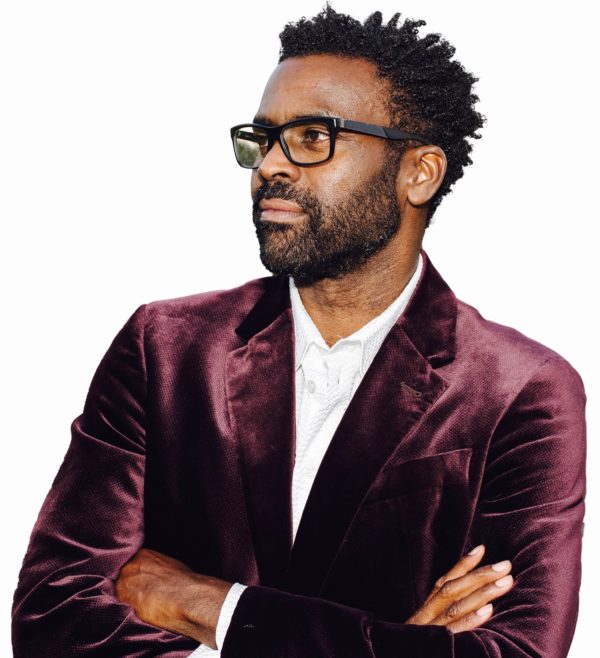[ad_1]
Venture Philanthropy combines the power of Venture Capital resources with the potential positive impact of philanthropic ideas. Christal Jackson founded Head and Heart Philanthropy (HHP) to bring together leaders in venture and philanthropy to build resources for communities of color. HHP’s annual convening on Martha’s Vineyard is “a safe space for venture and big ideas.” HHP has generated millions of dollars in venture and philanthropic investments in communities of color.
In 2018, Jackson launched Mosaic Genius; a deeper dive for impact investors. With venture philanthropy at its core, according to Jackson, this new convening “solves for the vulnerable ecosystem around wealth building and social impact in communities of color.” Black Enterprise contributor Brandon Andrews sat down with three investors from the Mosaic Genius network to learn more about Venture Philanthropy and its potential for communities that need investment most.

Erik Moore, managing director, Base Ventures
Brandon Andrews: What drives you as a venture capitalist? How do you work with entrepreneurs?
Erik Moore: We named our firm Base Ventures for a reason. In cooking a dish, the main ingredient of the meal is called the ‘base’. We believe that along with building a company that will address a substantially large market, with a founder who is singularly focused, the key ingredient that makes it all work is capital. That’s where we as investors come in. We help these companies realize their dreams and build amazing products and services that have the potential to change countless lives. What makes us special is that we don’t stop after writing the check. We get as involved and we are as helpful as the fledgling entrepreneur needs. We give advice, we help find key hires, we help think about financial engineering and we are sometimes even therapists.
You have been involved with Head and Heart Philanthropy and other impact programs. Does the venture capital community have a responsibility to solve community problems in addition to the fiduciary responsibility to investors?
Moore: I’m not an ‘impact investor’ but a traditional venture capitalist. The new platform Mosaic Genius focused on building capacity for venture capitalist was appealing because economic equity and sustainability are critical components for a healthy economy for all.

Gayle Jennings O’Byrne, CEO, iNTENT Manifesto
What is venture philanthropy?
Jennings O’Byrne: Venture philanthropy is the crossroads of impact and returns. It is the wonderful intersection that recognizes that social impact, social change can be achieved without compromising value, economic performance and investor returns. The expectations and outcomes demanded of the enterprises are high and rightly so because the organizations and the people being served can achieve them. What better way to drive change than to structure it so that everyone “wins.”
Why is the venture philanthropy approach to investing/problem solving important for communities of color?
Jennings O’Byrne: For too long, the expectations, policies, and resulting resources that follow have been shaped by an underlying deficit model or “less than” mindset. Such deficit thinking misses the assets, talents, innovation, and desire of communities of color to soar.
Such thinking is limiting and so we need a new approach to growing the economy. We need to design with intent and invest with inclusion if we wish to create wealth, jobs, and stabilize neighborhoods in communities of color.
Communities of color have been entrepreneurial, creative, and resilient for generations. Those qualities coupled with the amazing products, services, innovations that I see daily being developed by entrepreneurs, especially women of color is where the future lies. It’s just smart business and smart investing to combine investment, inclusion, and social values to invest and grow companies.

Melissa Bradley – Managing Director, Sidecar Social Finance
Melissa Bradley – Managing Director, Sidecar Social Finance. Image: sidecarsocialfinance.com
You have spent time in the philanthropic space, government, and the business world as both an entrepreneur and investor. With that perspective, what kind of products/solutions/services make the most sense for a venture philanthropy investment?
Bradley: Venture Philanthropy provides a tremendous opportunity for investors to replicate that which works in venture capital in support of positive social impact. Venture capital—while plagued by implicit and selection bias—provides much-needed risk capital for its companies, strategic advice via portfolio management, and patient capital with time horizons up to 7 to 10 years.
With these three elements, venture philanthropy is ideal for investments that take time to scale, have little to no market value to the primary consumer and therefore need a subsidy, and take time to generate a return— market or concessionary.
Sample products and services that are ideal for venture philanthropy include Ed Tech which takes time to scale due to antiquated historical data systems, siloed decision making processes and limited data sharing. Fintech is another ideal target investment category due to every changing regulation, legacy technology systems, and disaggregated distribution channels. The most popular area of investment for venture philanthropy is youth development. Due to the diversity of the target market, longevity required for significant change and high level of interdependency on other systems, such as healthcare, education, family and the like, there is a need for patient capital.
How should an entrepreneur prepare to pitch an investor taking the venture philanthropy approach? Is it significantly different than pitching more “traditional” investors?
Bradley: Pitching to an investor is the same regardless of the investor type. Investors want to know what the return is going to b—regardless if the return is primarily financial or social. Therefore, an entrepreneur must be able to articulate the “return” in terms of the investor desires. If a financial return is the focus, then entrepreneurs need to know their numbers and cash flow and be able to articulate profitability. If a social return is the focus, then the entrepreneur needs to know the quantitative outputs and outcomes that will be produced to create impact, along with how much it will cost and how long it will take to achieve the social impact.
In addition to knowing their “numbers,” entrepreneurs pitching to venture philanthropists need to demonstrate a clear problem that has a large enough market to address, ability to execute and solve the problem (traction is preferred), a solid team who has sector and/or business expertise, and some market and customer validation.

(Shutterstock)
John D. Rockefeller III, the man who created the term “venture philanthropy” described it as “an adventurous approach to funding unpopular social causes.” In 2017, venture capitalists invested over $148 billion globally. As the United States becomes increasingly diverse, the problems disproportionately impacting communities of color become everyone’s concern. Popular or not, leveraging venture to fund “social causes” that solve these problems is not nice, but necessary.
Investors employing the venture philanthropy approach are poised to shape the world of tomorrow and may position communities of color to solve problems and reap social and financial returns.
[ad_2]
Source link

